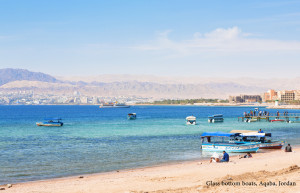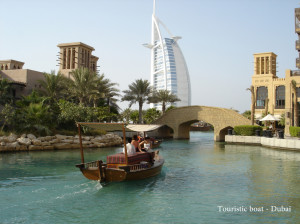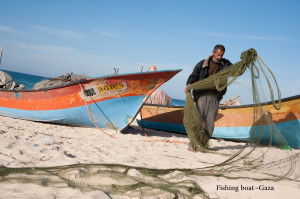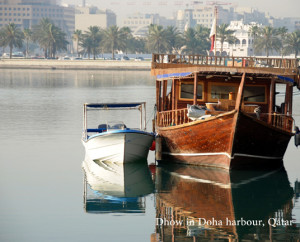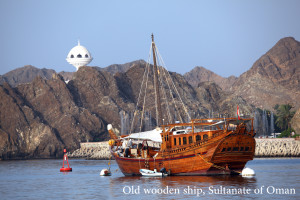Turning trees into boats
The skill of building wooden boats
what future?
It’s a sad fact but traditional boat building has become an endangered skill in recent years. Using wood, the main component of boat building, many artisans and professional craftsmen (who are predominantly male) work around the clock to finish a boat or dhow.
These amazing wooden boats and dhows are part of Qatari, Emirati, Bahraini, Omani, Yemeni, Kuwaiti, Palestinian and Jordanian heritage. Used for fishing and pearl diving across Asia and Eastern Africa, boats come in different forms, some of which are intricately carved vessels. Some designs can take up to six months of hard work for a crew of eight craftsmen to create.
Many Middle Eastern countries, including Turkey, continue this traditional industry and use specific techniques to develop and construct all-wooden boats using the ‘cold molding’ method.
Dubai
In Dubai, United Arab Emirates, modernisation has altered boat production over time – not only the skills used but also the designs of the boats currently being built. Even with traditionally-made wooden boats taking up to five years to complete, Mihriz Bin Tok, one of Dubai’s last craftsmen still uses the core traditional skills. Mr Tok is following in his father and grandfathers’ footsteps by building the biggest dhow in the Arab world. According to Yahoo Maktoob news, 120,000 giant nails were used in its construction and it can carry a load of 2,500 tones. Another Emirati traditional boat builder has turned his efforts from dhows towards manufacturing modern speedboats so as to avoid abandoning his craft due to a change in market demand.
Bahrain
In Bahrain, dhows are still built in shipyards where you can hear the rhythmic hammering of nails into the strong wooden bodies of these traditional boats. At the beginning of the 20th century, Bahrain was home to around 30 active shipyards that built vessels for the pearling and fishing industries, employing thousands of people including divers. It is said to have housed more than 500 dhows.
In a report by Canada’s ‘Rear Curtain’, a visual storytelling website, a report on Bahrain’s shipbuilders mentions that written plans are rarely used, as artisans rely upon their expertise and memory during a build.
Rear Curtain’s report also sheds light on one of the remaining Bahraini master shipbuilders who is in his 70s.
Building a boat from scratch costs in the region of 150,000 Bahraini dinars (c.$400,000). Dhows, with their one-piece keel made of a single length of teak imported from Southeast Asia, can cost up to 5,000 dinars. The craftsmen of today are usually immigrants, coming from the same region as the wood used to create the boat – the Asian sub-continent.
Palestine
Unfortunately, the creation of traditional Palestinian boats in Gaza is following the fate of other traditional boat industries in the region; it is on the brink of extinction.
The process in Gaza, where all craftsmen are Palestinians, has an infinitely more complicated building process. Boat building is a restricted activity and requires a special permit. Also, due to the illegal Israeli blockade, boat builders are unable to import raw materials such as oak to build their boats. The boats that do make it through this process are used for fishing, some for research, and others for touristic purposes … if they are lucky/extremely optimistic!
An infinitely more dangerous threat than just its traditions dying out is the Israeli sea siege, where boats are regularly fired upon and people injured. The Israelis continue to impose a three-mile boundary along Gaza’s coastline, despite the Oslo agreements stating that Palestinian fishermen should be able to fish up to 20 miles. More than 3,500 fishermen used to work in the Gaza Strip and provided important nutrition to more than 45,000 individuals – a loss that has been sorely felt by Gazan residents.
Abdallah Najjar is one of few remaining boat builders in Gaza. In an interview with elWatan News, he explained that a large boat might cost up to $70,000 to construct. Najjar builds his boats using primitive tools as he cannot afford to buy more up-to-date tools as the market is ‘difficult’ to say the least, and demand is low.
Qatar
The case in Qatar is different. A big festival takes place in the Cultural village of Katara in Doha each November to celebrate, encourage and preserve the building of their traditional boats and dhows. In an ambiance filled with traditional music, activities last November included dhow building demonstrations, light and firework shows, plus pearl diving.
According to a report by Reuters, 75,000 fishermen and 4,500 boats used to operate in Qatar at the beginning of the twentieth century.
Traditional boats are given different names such as Sanabeck, Tieeh, Jalbout and Al Baggara. There is more demand for traditional boats for use in the tourism sector. Traditional boats can cost up to $120,000 and should last up to 120 years, whereas modern and metal boats – at $60,000 – have a shelf-life of only 50 years according to a report by Al Jazeera Channel. Ahmad Al Sane’, one of the few remaining artisanal boat builders, said that it takes him many long months to finish a single boat – up to six usually – as everything is done by hand.
Yemen
However, fellow boat builders in the Yemen do not have the same support; it seems the attraction of fibreglass boats is too strong. The remaining traditionally built boats require a high level maintenance and are rather costly and difficult to handle.
Oman
‘Boom’ and ‘Sanbouk’ are names given to boats in Oman, where the younger generation don’t seem to be interested in following their fathers into boat manufacturing. One of the last boat builders in Oman, Jomaa Al Oraymi, explains that his sons complain about the harshness of the working environment. The government has made an effort to preserve this dying industry but the lack of local craftsmen has meant it is also facing extinction.
The future – is there one?
The most common threat to the industry is the unwillingness of the younger generation to carry on their fathers’ and grandfathers’ handicraft of building beautiful wooden boats … boats that have traveled the high seas for centuries.
Unless the remaining artisans we’ve mentioned, namely the Omani, Jomaa Al Oraymi, the Qatari, Ahmad Al Sane’ and the Palestinian, Abdallah Najjar, can hang on in the face of the modernisation of the sector, decreasing market demand, and increasing personal hardship, these skills could be lost forever.
How soon will these remaining boat and dhow builders turn their skills to making model ships, or using fibreglass rather than wood, instead of sea-worthy traditional wooden boats? If the industry receives the support it needs, as happens in some countries, it can increase the number of direct and indirect jobs linked with the boatyards. It’s an amazing skill and deserves to be preserved.












